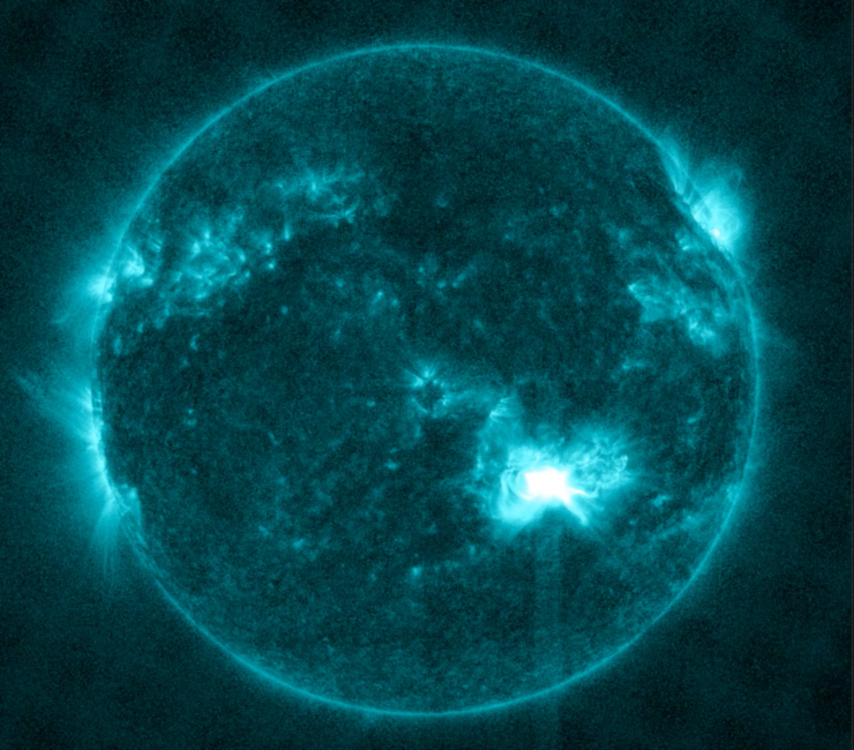
 Credit: NASA; SDO
Credit: NASA; SDO
Stormy Solar Weather
Our Sun is a ball of hot, ionized gas powered by thermonuclear reactions in its core. Energy generated by the core gets transported to the Sun's surface by radiation, and also by the bulk motions of hot plasma rising to the surface, cooling off and falling back down to the interior. The circulation of this ionized gas roduces magnetic fields, much like the circulation of electrons in a metallic wire loop. Because the Sun is gaseous, different latitudes of the sun rotate with different periods, and this latitudinal variation in rotation causes the magnetic field to sometimes become "wound up" and grow in strength. Energy stored in the tangled magnetic produces an array of solar phenomena, like highly magnetized sunspots, solar prominences (loops of magnetically-confined plasma that have broken through the sun's surface into space), and solar flares. The increasing magnetic field drives increasing solar activity, producing a solar activity cycle which recurs every 11 years, approximately. We are now nearing the maximum of the current solar activity cycle, which is predicted to occur in the middle of 2025. This cycle seems particularly powerful, as witnessed by a large fraction of earth's population. On May 9 a region of particularly strong magnetic activity on the Sun's surface exploded, ejecting an enormous amount of plasma and magnetic field into space in the direction of earth. This "coronal mass ejection", traveling at about 2 million miles per hour struck the earth's protective magnetic field about 2 days later. This collision produced an extreme G5-class geomagnetic storm and, as the electrons in the coronal mass ejection were trapped by the earth's magnetic field and funneled to earth's the north and south magnetic poles, produced exceptionally powerful aurorae visible even near the earth's mid-latitudes. This gave earthlings spectacular views of the northern lights over much of the continental US and Europe, and views of the aurora australis over much of the southern hemisphere. G5-class storms are the most powerful known geomagnetic storms, powerful enough to do real damage on earth, impacting radio and satellite communications, GPS, the internet, and electrical power grids. Still, this storm pales in comparison to the most powerful geomagnetic storm yet recorded, the Carrington Event of 1859, produced by an extremely powerful solar flare so bright it was visible to solar observers (like Richard Carrington, for whom the storm is named). The Carrington storm also produced spectacular aurora and also was powerful enough to melt telegraph wires. Scientists speculate that another Carrington-level event might severely cripple global communications and perhaps even imperil our modern ever-so-technologically-dependent civilization.
Published: May 13, 2024
<
HEA Dictionary ● Archive
● Search HEAPOW
● Other Languages
● HEAPOW on Facebook
● Download all Images
● Education ● HEAD
>

Each week the HEASARC
brings you new, exciting and beautiful images from X-ray and Gamma ray
astronomy. Check back each week and be sure to check out the HEAPOW archive!
Page Author: Dr. Michael F. Corcoran
Last modified Monday, 13-May-2024 14:36:01 EDT


